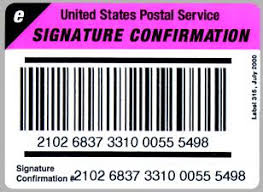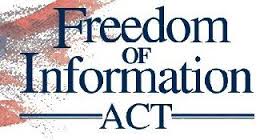POSTING DATE: May 7, 2018
Learn More About:
Immigration News & Updates eNewsletter © 2011 - 2018
For questions about U.S. Residency, Green Cards and Immigration Visas, Visit our Website at: www.ImmigrateToday.com or call our office at: (954) 382-5378
Check Out This Cool Stuff For Immigrants....
Immigration
Questions & Answers
This Week's Immigration News
Question: I sent in my immigration papers three weeks ago and still I did not get any paper back yet. I have the certfied mail receipt and it says it was delivered. I checked and it says the money order was deposited. Is this possible that it can take that long before I get a letter from immigration?
Answer: Yes, once the USCIS receives your application, it can take more than a week for the check or money order to be cashed and another 7-10 days for you to receive your Receipt, called the I-797 Notice of Action. The back of the check or money order will have the case number on it and will start with three letters, followed by 10 numbers, for instance, MSC1234567890. You can check the status on the USCIS website. Another easy way to know your case was received is to include a form G-1145 with each case, in order to get a text or email message from the USCIS once your case is received, which will include the case number. Once you have your case number, you can go to the USCIS website and sign up for Email Status updates on your case through the USCIS My Case Status program. Once you register and enter your case number(s), the USICS will automatically email you notifications and updates on any actions take on your case so that you are better informed about your case status. A good tip is never to send an immigration application using certified mail, since it takes such a long time to be delivered. Its always best to use Priority Mail, which often takes about 2 days for delivery and only costs about $7.
Marriage Fraud Convictions Increase As Fake Marriages Rise
Due To Fears About Trump Immigration Policies
Immigration How To:
How Do I Answer This Letter I Got From Immigration?
Helpful Immigration Tips You Can Use...
Immigration News & Updates eNewsletter
eNewsletter
According to some reports, marriage license issuance is on the rise in South Florida, perhaps by 30% in some jurisdictions. This could be due to an increase in fake marriages, undertaken for immigration purposes by Immigrants fearful of the Trump administration’s tough immigration policies.
Yet as sham immigration marriages increase, so do convictions of participants by Federal authorities. In just a few of the many recent separate cases of marriage fraud involving Jamaican, Venezuelan, Russian and other nationals, some participants received Federal prison sentences, fines and deportation.
Tips On New USCIS Restricted Delivery Mail Policy
In one case last month, a Jamaican national was convicted for paying a U.S. Citizen more than $8,000 for a fake marriage in order to obtain a Green Card, then later, early naturalization, becoming a U.S. Citizen in 2013. He then divorced the U.S. Citizen, married the mother of his child, who was also a Jamaican national and filed for her Green Card. This proved to be his downfall, as the USCIS discovered that he and his real girlfriend lived together and had a child during the same time he had earlier claimed to be with his previous U.S. citizen spouse. USCIS Fraud Detection National Security (FDNS) officers and ICE agents investigating the case discovered the fraud which led to his prosecution.
In another case involving a Cuban fake marriage scheme, a Miami woman and some forty other participants were convicted for fraud and other related crimes in a fraudulent marriage ring, while some Immigrants in the case were deported. The women was apparently the ringleader of one of the largest marriage fraud rackets in South Florida, who arranged fake marriages for Cuban women who had Green Cards and U.S. Citizenship to immigrants from Russia and Eastern European countries for immigration papers, charging some $25,000 to the Immigrants, while keeping $20,000 for herself.
In an elaborate scheme, the ringleader “staged” weddings, fake marriage photos of the ceremony and reception and even coached the couple by conducting “mock” marriage interviews to evade detection. Immigrants later caught as part of the fake marriage scheme were stripped of their Green Cards, U.S. Citizenship and deported. Immigrants who marry a qualifying Cuban spouse receive an automatic ten year Green Card, rather than the regular two year Green Card issued to other Immigrant spouses. As a result, marriage immigration fraud involving marriage to Cubans is particularly prevalent in South Florida and therefore more “suspect”, with USCIS officers increasingly more vigilant in detecting instances of fake marriage in such cases. Thus, marriage to a Cuban may be a “red flag” to immigration authorities in some immigration cases.
In similar marriage fraud ring cases last year involving paid marriages, Venezuelan Immigrants were convicted for paying some $10,000 to Cubans in exchange for fake marriages to obtain a Green Card. This is becoming more and more prevalent as Venezuelan refugees who stream into south Florida each day desperate to find a path to immigration, fall victim to fake marriage schemes and find themselves instead in deportation. Federal authorities who uncover current such schemes are often able to identify Immigrants who participated in the scheme in the past and revoke residency and citizenship, as well as impose other federal penalties, so Immigrants who obtain Green Cards and even citizenship risk losing it even many years later, if the initial fraudulent scheme is detected in the future. The maximum penalty for participants is five years imprisonment and a fine of $250,000.
The USCIS recently announced that it would begin phasing in use of the U.S. Postal Service’s (USPS) Signature Confirmation Restricted Delivery service, when it mails Green Cards, Work, Travel and Re-entry permits and other secure documents to Immigrants.
The USCIS has already begun instituting the program for documents that need to be re-mailed to Immigrants, which had previously been returned to the USCIS as non-deliverable. The return of documents to the USCIS as “non-deliverable” is usually the result of Immigrants having changed mailing addresses during the immigration process who failed to file a change of address online with the USCIS.
It’s important to note that setting up a mail “forwarding” with the U.S. Postal Service will forward regular mail to the Immigrant, but will automatically result in documents being returned to the USCIS as non-deliverable, since these sensitive government documents cannot be forwarded to a new address.
Under the new Restricted Delivery policy, all documents will be sent to Immigrants using the U.S. Postal Service’s Signature Confirmation Restricted Delivery service which will require Immigrants to provide identification and to sign for their documents upon delivery. Immigrants who are not home when the U.S. Postal Service attempts to deliver, will be issued a notice on their door and be able to pick up their immigration documents at the local post office.
The service also allows Immigrants who know they are going to be receiving their documents from the USCIS to register for Informed Delivery through the U.S. Postal Service to get daily images of mail being sent. The Informed Delivery also allows Immigrants to automatically track expected packages, set up email and text alerts Delivery Instructions for the mail carrier to hold the package for pickup. There is also an option to designate another person to sign for the package by downloading and completing a designated agent form and providing it along with identification when the mail carrier delivers the package.
With all this said, it’s more important than ever for Immigrants to keep the USCIS updated on any address changes and to sign up for automatic email and text alerts on pending immigration cases, in order to know when a Green Card or other document is being sent out.
Read more:
Question: I have a question about my daughters naturalization. She was 17 years old last year when I naturalized and so I was able to get her American passport along with mine. But I just want to inquire about getting her actual naturalization paperwork in case she needs it in the future. Will her American passport be sufficient enough proof of her citizenship in the future or does she need her naturalization papers and if so, how do I go about it?
Answer: That’s a great question. Under the Child Citizenship Act, U.S. Resident children who are under age 18 automatically obtain U.S. Citizenship when a biological parent Naturalizes. Similarly, children of U.S. Citizens who immigrate to the U.S. from abroad and enter the U.S. before turning age 18, become automatic U.S. Citizens as well. Qualifying children must be under age 18 at the time their parent actually naturalizes (takes the Oath), not the date the parent files for Naturalization.
As a result, parents should carefully plan the date of filing for Naturalization to ensure that they will complete the process before their child(ren) reach age 18. Figuring about 12 months to take into account any USCIS processing delays is reasonable, under current lengthy Naturalization processing times. Importantly, even when children become U.S. Citizens through this process, the USCIS does not automatically issue a Naturalization Certificate.
However, in reality, none is required, since applying for a U.S. Passport is all that is necessary to prove the child’s new U.S. Citizenship status. To obtain the child’s U.S. Passport, in addition to other information, the U.S. Passport office requires a copy of the parents’ Naturalization Certificate and proof that the child actually resides with his or her U.S. Citizen parent in order to qualify. So, you do not need to pay $555 to order a Naturalization Certificate, since your U.S. Passport is all you need to prove your U.S. Citizenship, even under Trump. I hope this is helpful.
Understanding How To Obtain Copies of Some Immigration Documents
Under The Freedom of Information Act (FOIA)
The Freedom of Information Act (FOIA) is a Federal law which in part allows individuals to obtain copies of documentation contained in government files, including those related to Immigration matters. Under current technological advances, FOIA requests made to the USCIS can be made by email.
However, it is important to understand that not all documents are available under FOIA, including requests to obtain duplicate approval notices or original documents submitted to the USCIS.
Typically, documents which can be obtained are copies of Immigration case filings, including supporting documents. This is particularly important when an immigrant has lost a copy of a vital document such as an I-94 which was previously submitted to the USCIS as part of an Immigration application.
To make an Email FOIA request to the USCIS:
Download and complete form G-639 Freedom of Information Act/Privacy Act Request, Then scan and email to the Department of Homeland Security at:
A Request for Evidence (RFE) is a letter that the USCIS officer sends you to request additional information or documentation on your application. RFE requests are generally most frequently issued for missing information or documentation to establish your eligibility.
Responding to an RFE from the USCIS
Always read the RFE letter very carefully to determine exactly what kind of evidence or document is being requested. Some RFE's are more complex than the others and it is difficult to determine and some are simple and easy to understand.
Tips on Answering a USCIS Request for Evidence (RFE)
For more complicated RFE letters, you may want to retain an immigration attorney to assist you. Once you have determined what the letter is requesting, be sure to provide the exact document requested. For instance, an officer may request a “long form” of a Birth Certificate. If you respond that you do not have one, your case will likely be denied. The appropriate action to take is to request one from the departmental authority in your country of birth.
How much time do I have to respond to an RFE?
Depending on the type of case, you may have from 33 days to 87 days to respond so that the USCIS receives your response before the expiration date. If you fail to respond or filed after the deadline, your case will likely be denied. To be on the safe side, you should always send your response by Express or Priority Mail and get a delivery confirmation. Never send any communications to the USCIS via Certified Mail, which takes much longer and can risk your response being received late. Finally, remember that your response to the USCIS officers request must be RECEIVED by the USCIS ON or BEFORE the deadline. Responses received even one day late result in complete case denials.
After I respond-what happens next?
Depending upon the case, it could take up to 60 days or more. You can check the online status to see if it is stating that your RFE response has been received, or call the USCIS 800# to ask if the computer show the USCIS received it. For adjustment case (I-485) requests, the officer may wait to receive your response before continuing processing of your Work Authorization application which will cause delays in its issuance. To avoid this, send your response as soon as possible and do not wait until you get near the deadline in the letter.
Questions?
If you need legal assistance responding to an USCIS request, contact a qualified Immigration attorney or call our office at: (954) 382-5378.












